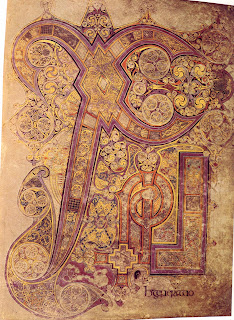Tuesday, June 28th, 2011
Book Review: "The Origins of Baroque Art in Rome" by Alois Riegl
Today I finished reading Riegl’s The Origins of Baroque Art in Rome (2009, Getty Publications). As I mentioned in an earlier post, this publication is very significant, since it is the first time that Riegl’s writings on Baroque art have been translated into English. Apart from a few introductory essays, this book is comprised of Riegl’s lecture notes. Riegl taught lectures on Baroque art during three different university semesters in the late 19th and early 20th century. These lecture notes were first published posthumously in 1908, and now have appeared in English almost a century later!1
I have to say, I think that this book is very interesting in many respects, but it’s not a book for someone who has a casual interest in Baroque art. Although Riegl’s lecture notes are written in a relatively approachable manner (since the text was written with the intent of being spoken in a lecture hall), the publication itself is rather dense. Riegl takes many specific arguments in his lectures, and he assumes that his audience already has a solid foundation of Renaissance history. In fact, much of this book discusses Renaissance art, as opposed to the Baroque art that is commonly found in today’s art history textbooks. For example, I was surprised to see more discussion of Bramante than Borromini (the latter was hardly mentioned at all!).
One of Riegl’s arguments is that Michelangelo and Correggio should be seen as the earliest predecessors of the Baroque style. I think this is an interesting argument. On a whole, I think that today’s Baroque scholars don’t give a lot of attention or emphasis to Michelangelo, at least in comparison with Riegl. Michelangelo really is the core of Riegl’s text. I think that today it is more common for people to think of Correggio as a “proto-Baroque” artist than Michelangelo. Perhaps 20th and 21st century Renaissance scholarship has such a vice-like grip on Michelangelo, that Baroque scholarship has been forced to back off a little bit?
I thought quite a bit about historiography while reading this book, and it wasn’t just because I noticed a discrepancy between today’s scholarship and Riegl’s treatment of Michelangelo. Riegl also made a passing comment about naturalism, which caught my attention: “Naturally, for us northerners the naturalists are the most interesting [artists to discuss].”2 As an Austrian art historian, Riegl realized that his geographic area and cultural origins influenced the way he responded to artistic style. Is there more scholarly interest in “naturalist” Baroque artists because so many great Baroque art historians came from Germany and Austria? Perhaps so!3
As for the publication itself, I liked that many of the key ideas and artists were highlighted in bold text. This small detail helps the viewer to maneuver and search through the text quite easily. On the other hand, I was disappointed to see so few images included in the publication – and the images that are included are only black and white! Although I have a solid foundation of Renaissance/Baroque sculpture and painting, I am less familiar with the secular architecture that is produced during those periods. Without images to help me visualize Riegl’s descriptions of the architectural pieces, I found myself a little bored and frustrated in that section of the text.
That being said, I really enjoyed reading the sections about painting and sculpture; I wasn’t bothered by the lack of images since I am familiar with the works of art that were discussed. Since I had this mixed reaction to the images (and lack of images!) in this book, I really would recommend this book only to Renaissance and Baroque scholars. Without many pictures to entice or engage the casual reader, this publication could disappoint. However, if you are interested in early Baroque scholarship and historiography, this is a great resource!
1 Riegl died in 1905 at the young age of 47.
2 Alois Riegl, The Origins of Baroque Art in Rome (Los Angeles: Getty Research Institute, 2009), 216.
3 One such “naturalist” artist is Caravaggio, as opposed to more-so classical artists (or “eclectic” artists, to use Riegl’s term) like the Carracci and Guido Reni. I personally think there is more interest in Baroque naturalism today, but I’m biased toward Caravaggio myself!
Thank you to H Niyazi of Three Pipe Problem, Inbooks and Getty Research Institute for supplying the review copy.





